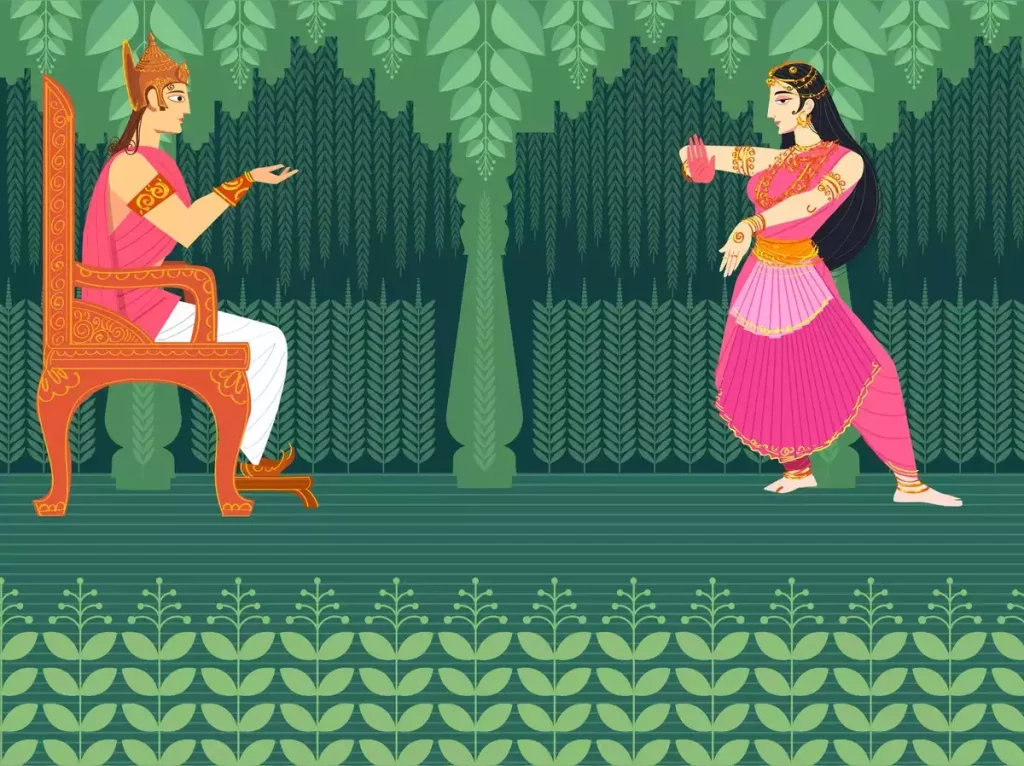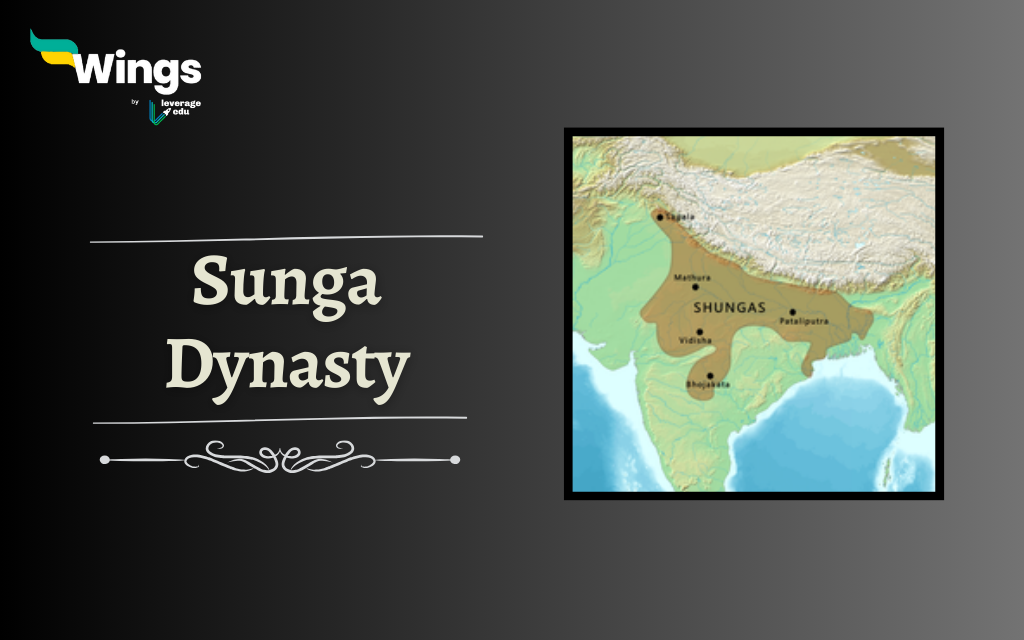The Sunga Dynasty, also known as the Shunga Dynasty, ruled over a significant period in ancient Indian history. Pushyamitra Sunga was the founder of the Sunga Dynasty in the year 185 BC. This dynasty emerged after the fall of the powerful Mauryan Empire and towards the rise of the Gupta Empire. Many independent empires came up during the Post-Mauryan period, Kalinga declared itself independent and many foreign invaders started their invasion in the Northwest region of India. In the Gangetic plains, one kingdom that defeated the Mauryans was the Shungas, and in the South, the Satavahana Dynasty thrived. In this article, we will delve into the origin, list of rulers, achievements and eventual decline of the Sunga Dynasty.
Contents
Origin of the Sunga Dynasty
The Sunga Dynasty came into existence in 185 BCE, 50 years after the death of Emperor Ashoka, marking the downfall of the Mauryan Empire.
- Pushyamitra Sunga, the first ruler of the dynasty, was an army general under the Mauryan regime.
- After assassinating the last Mauryan ruler, Bidaratha, he established his own kingdom with Pataliputra as its capital.
- Many historians suspect the defeat of Bidaratha was an internal rebellion.
- He also bravely put forward a counter-attack against two Greek rulers, namely Menander and Demetrius
- Pushyamitra’s rule lasted for 36 years, and soon his son inherited the throne.
Also Read – Yadava Dynasty: History, Rulers, Administration & Decline
List of Rulers of the Sunga Dynasty
The list of the rulers of the Sunga Dynasty is mentioned in tabular form below-
| Rulers | Years | Features |
| Pushyamitra Sunga | 185 BCE – 149 BCE | Founder of the Sunga Dynasty, who fought against the Kharvela of Kalinga and defeated them. |
| Agnimitra | 149 BCE – 141 BCE | Known for his patronage of the arts and literature. |
| Vasujyeshtha | 141 BCE – 131 BCE | Focused on consolidating the empire’s power |
| Vasumitra | 131 BCE – 124 BCE | Expanded the Sunga Dynasty’s territorial reach |
| Bhadraka | 124 BCE – 122 BCE | Known for his reign of prosperity |
| Pulindaka | 122 BCE – 119 BCE | Strengthened the empire’s infrastructure |
| Ghosha | 119 BCE – 108 BCE | Further expanded the kingdom’s borders |
| Vajramitra | 108 BCE – 94 BCE | Known for his religious tolerance and patronage of Buddhism |
| Bhagabhadra | 94 BCE – 83 BCE | The downfall of the Dynasty started |
| Devbhuti | 83 BCE – 73 BCE | Last ruler of the Sunga Dynasty |
Achievements and Contributions of the Sunga Dynasty
Many conflicts and sacrifices took place for the dynasty to keep its reign. However, they eventually contributed to the growth and prosperity of the nation.
- Patronage of Buddhism: The Sunga rulers greatly contributed to the promotion and development of Buddhism. They constructed numerous monasteries, stupas and viharas, which became centres of Buddhist teachings and pilgrimage.
- Art and Architecture: Under the Sunga Dynasty, art and architecture thrived. The famous Satavahana lion capital, depicting four lions back to back, was created during this period and is now the national emblem of India.
- Literary Contributions: The Sunga Dynasty witnessed a remarkable growth in literature. The two most famous literary works are –
- By Sage Patanjali the Yoga Sutra and Mahahasya.
- By Kalidasa, Malavikagnimitram
- Infrastructural Development: The Sunga rulers focused on improving the infrastructure of their empire. They built roads, canals, and irrigation systems, all contributed to agricultural growth and economic prosperity.

Decline of the Sunga Dynasty
The decline of the Sunga Dynasty can be attributed to various factors. Internal conflicts, weak rulers and invasions from foreign powers gradually weakened the empire.
- The ruler Devbhutti was assassinated by his own minister Vasudeva Kanva around 73 BCE.
- The Kanva Dynasty was established at Magadha from 73 BCE to 28 BCE.
- Furthermore, regional uprisings and rebellions eroded the Sunga Dynasty’s control over its territories.
- Ultimately, the empire fell to the incursions of the Kanva kingdom, bringing an end to their reign.
Also Read – Shishunaga Dynasty (413 BCE to c. 345 BCE)
The Sunga Dynasty had a significant effect on the history of ancient India. They helped in the revival of Hinduism, and since they had an orthodoxical Brahminical approach, the Brahman system also revived under their rule. From their origin as a successor to the Mauryan Empire to their contributions in the fields of art, literature, and trade, they left a lasting impact. However, internal conflicts and external invasions took their toll, leading to the eventual decline of this once-mighty dynasty.
FAQs
The Sunga Dynasty revived Brahmanical traditions, promoted Sanskrit literature, and enhanced art and architecture, notably the Bharhut Stupa. It also defended India from foreign invasions, maintaining stability in northern regions.
The Sunga Dynasty was a Brahmanical kingdom that emerged after the fall of the Mauryan Empire around 185 BCE. Founded by Pushyamitra Sunga, it marked a shift from Mauryan centralization to regional rule.
The Sunga period was important for reviving Hinduism and promoting classical Sanskrit culture after the Mauryan decline. It also played a key role in resisting foreign invasions and preserving Indian political unity.
Relevant Blogs
| Chalukya Dynasty | Bahmani Kingdom |
| Kushan Dynasty | Pallava Dynasty |
| Khilji Dynasty (1290–1320) | Lodi Dynasty |
| Haryanka Dynasty | Chola Dynasty |
| Pala Dynasty | Kakatiya Dynasty |
That’s all about the Sunga Dynasty! If you want to know more about topics like this, then visit our general knowledge page! Alternatively, you can also read our blog on general knowledge for competitive exams!
 One app for all your study abroad needs
One app for all your study abroad needs














